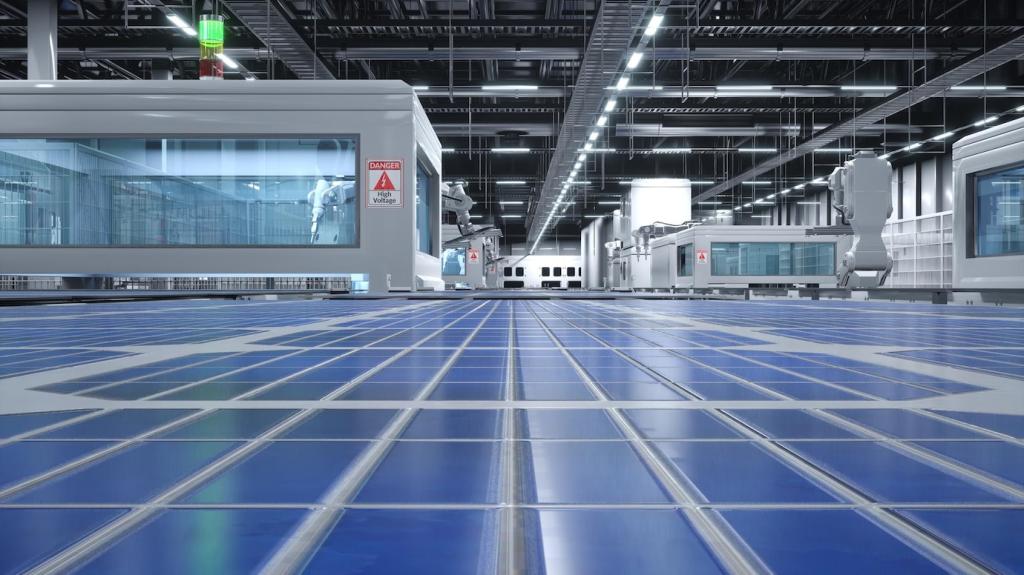Make Every Ray Count at Home


What Solar Efficiency Really Means at Home
A panel’s efficiency describes how much sunlight becomes electricity on a lab bench, but your system performance reflects everything working together. Wiring losses, inverter conversion, temperature, and shade all change results. Share your setup details below so we can discuss realistic expectations for your home.
What Solar Efficiency Really Means at Home
Manufacturers test under bright, cool, controlled conditions that rarely match summer afternoons on dark shingles. Understanding STC and NOCT clarifies why nameplate watts differ from real output. Comment with your climate zone and roof color, and we’ll help translate specs into everyday performance.
Site, Sun, and Shade: The Three Essentials
South-facing roofs with a tilt close to your latitude often perform best, but seasonal goals matter. A steeper tilt favors winter sun, while a flatter tilt boosts summer output. Tell us your latitude and energy priorities, and we’ll suggest a practical, roof-friendly angle strategy.

Site, Sun, and Shade: The Three Essentials
A single chimney shadow can drag down an entire string, especially around noon in winter. Use shade analysis tools or a simple time-lapse to track obstruction movement. Post a quick video of your roof’s midday shade, and we’ll help estimate annual impact and mitigation options.
Measuring Real-World Output with Confidence
01
Track kWh per kW and performance ratio
Normalize your energy by system size with kWh per kW to compare months fairly. Add performance ratio to gauge losses versus expected weather. Start a simple log today, and share your first week of data; we’ll help you spot patterns and low-hanging improvements.
02
Use smart meters and app-based data loggers
Most modern inverters and microinverters offer rich dashboards showing per-panel output, voltage, and fault flags. Commit to a 30-day baseline before tweaking settings. Post a screenshot of your daily curve, and we’ll explore inverter settings or optimizations that sharpen your efficiency.
03
Weather normalization for fair comparisons
Clouds, haze, humidity, and temperature skew daily results. Compare weeks with similar weather or use basic irradiance estimates from reputable sources to normalize. If you drop your ZIP code below, we can link helpful data feeds and interpret your seasonal swings with more clarity.

Monocrystalline, TOPCon, and HJT in everyday terms
Modern mono panels commonly exceed fifteen percent efficiency, with TOPCon and HJT pushing higher while improving temperature behavior. The difference shows on hot roofs and compact spaces. Tell us your roof area and peak temperatures, and we’ll suggest a technology path that fits your constraints.
Bifacial benefits and when they make sense
Bifacial panels can capture light from below, boosting yield over reflective ground or light roofs, especially in ground mounts and pergolas. On typical shingle roofs, gains are modest. Describe your mounting style and surroundings, and we’ll estimate whether bifacial delivers meaningful returns for you.
Microinverters versus string inverters with optimizers
Shaded or complex roofs often benefit from panel-level power electronics that keep one weak panel from limiting the whole array. Simpler rooflines may favor efficient strings. Share a sketch of your roof planes and obstacles, and we’ll recommend an approach that preserves efficiency year-round.
Think in LCOE, not just payback
Levelized cost of energy divides lifetime costs by lifetime production, revealing the real price per kilowatt-hour. Efficient panels, durable racking, and smart design lower it. Share your utility rate and estimated production, and we’ll help sketch an LCOE you can compare confidently.
Batteries, round-trip efficiency, and self-consumption
Storage captures midday overproduction, but every charge and discharge trims energy slightly. Align battery size with evening loads and rate structures to keep value high. Tell us your nightly usage pattern, and we’ll estimate whether a battery lifts your home’s effective efficiency and savings.
Cleaning, degradation, and small maintenance wins
Panels slowly lose output each year, and dust can accelerate short-term losses. Seasonal rinses, careful inspections, and timely firmware updates help reclaim energy. If you share your climate and pollen levels, we’ll propose a gentle cleaning cadence that balances effort with measurable gains.
A Saturday tilt tweak that paid off
One family raised their adjustable rack five degrees for winter, then lowered it in spring. Their kWh per kW improved, especially on short, clear days. Share your mounting style and season, and we’ll suggest safe, incremental adjustments to test without risking roof integrity.
Chasing shadows with a phone and patience
A homeowner filmed roof shadows hourly for a week and spotted a vent pipe clipping noon sun. A small panel relocation recovered lost energy. Try a similar time-lapse this weekend, post your findings, and we’ll brainstorm low-disruption fixes tailored to your roof layout.
A dashboard discovery about inverter settings
Another reader noticed their voltage curve sagging on hot afternoons. A quick consult led to updating inverter limits and adding modest attic ventilation. Performance stabilized. If you share a week of curves, we can help interpret them and highlight settings that protect efficiency.
